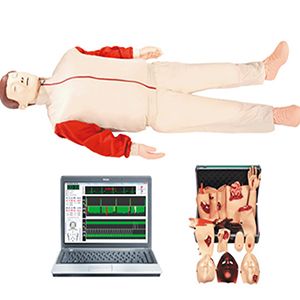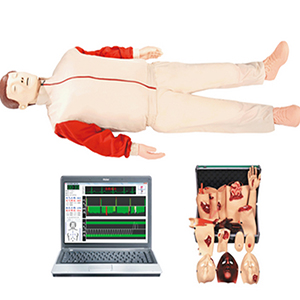
Can advanced cardiopulmonary resuscitation trauma simulators effectively reduce the error rate in clinical first aid?

In general, advanced cardiopulmonary resuscitation trauma simulators can effectively reduce the error rate in clinical first aid through the advantages of highly restored clinical scenes, immediate feedback and accurate guidance, repeated training, and enhanced team cooperation. Through continuous practice and feedback, students can continuously improve their emergency handling ability in a risk-free environment, laying a solid foundation for accurate operation in actual first aid scenarios. Therefore, this high-end training model undoubtedly provides important support for the improvement of first aid skills, and will play an increasingly important role in the future first aid training.
...
The accuracy and timeliness of first aid skills directly determine the life and death of patients in clinical practice, and cardiopulmonary resuscitation (CPR) and trauma first aid technology are the core contents. With the continuous development of emergency medicine, simulation training has become an important means to improve the level of emergency medicine. In this field, advanced cardiopulmonary resuscitation trauma simulators have been gradually introduced into medical training as a high-tech training tool. So, can such simulators effectively reduce the error rate in clinical emergency care?
1. Provide highly restored clinical scenes

Advanced cardiopulmonary resuscitation trauma simulator
Advanced cardiopulmonary resuscitation (CPR) trauma simulators have simulated a variety of clinical emergency situations such as cardiac arrest, respiratory obstruction, and trauma bleeding by simulating real trauma first aid scenarios. It can simulate physiological responses under various emergency situations, such as heart rate, breathing and blood pressure changes, and even the patient's skin temperature and breathing sounds, increasing the sense of reality and urgency of students. Through this "realistic" training, students can repeatedly operate and correct errors without actual patients, thereby reducing errors in actual clinical operations.
2. Immediate feedback and precise guidance
In contrast to traditional clinical training, advanced simulators can provide immediate feedback, such as accurate assessment of compressions depth, frequency of compressions, airway management, and more. Research shows that through real-time data feedback, students can quickly identify problems in operation and correct them in time, effectively improving their technical level. For example, a study of CPR showed that first responders trained using simulators had error rates more than 30 percent lower than traditional training methods.
3. Repeated training and skill strengthening
Clinical first aid skills require a lot of repeated practice, advanced cardiopulmonary resuscitation trauma simulator allows students to perform cardiopulmonary resuscitation and trauma first aid operations many times in a simulated environment. By simulating different first aid situations, students are able to improve their operational flexibility and resilience. The data showed that participants who performed multiple simulation exercises were able to make accurate judgments more quickly in the face of first aid, thus reducing the likelihood of errors.
4. Enhance teamwork and emergency response ability
Team cooperation is crucial in first aid. Advanced cardiopulmonary resuscitation trauma simulators can not only simulate a single operating skill, but also improve the collaboration ability among team members through joint training of multiple simulators. In the simulated environment, team members can work together to quickly respond to complex first aid scenarios. Research has shown that this type of teamwork training can effectively improve the overall efficiency of first aid and reduce errors caused by poor information transfer or miscommunication.
5. Data support and continuous evaluation
Advanced simulators are often equipped with advanced monitoring systems that can track the students' every move. Through the accumulated data, students can clearly see their progress and shortcomings in training, and then improve the technology. Analysis of the data showed that first responders trained with simulators had a 20 to 40 percent higher success rate in situations such as complex trauma or cardiac arrest than those not trained with simulators.
conclusion
In general, advanced cardiopulmonary resuscitation trauma simulators can effectively reduce the error rate in clinical first aid through the advantages of highly restored clinical scenes, immediate feedback and accurate guidance, repeated training, and enhanced team cooperation. Through continuous practice and feedback, students can continuously improve their emergency handling ability in a risk-free environment, laying a solid foundation for accurate operation in actual first aid scenarios. Therefore, this high-end training model undoubtedly provides important support for the improvement of first aid skills, and will play an increasingly important role in the future first aid training.

Marketing Center
Hong Kong, ChinaProduction Base
Shanghai, ChinaProducts
Contact Us
 Address: Hong Kong, China
Address: Hong Kong, China
 Phone:+86 19937901373
Phone:+86 19937901373
 Email:sophia@adahealthy.com
Email:sophia@adahealthy.com
 Mobile:+86-0379-65160607
Mobile:+86-0379-65160607








